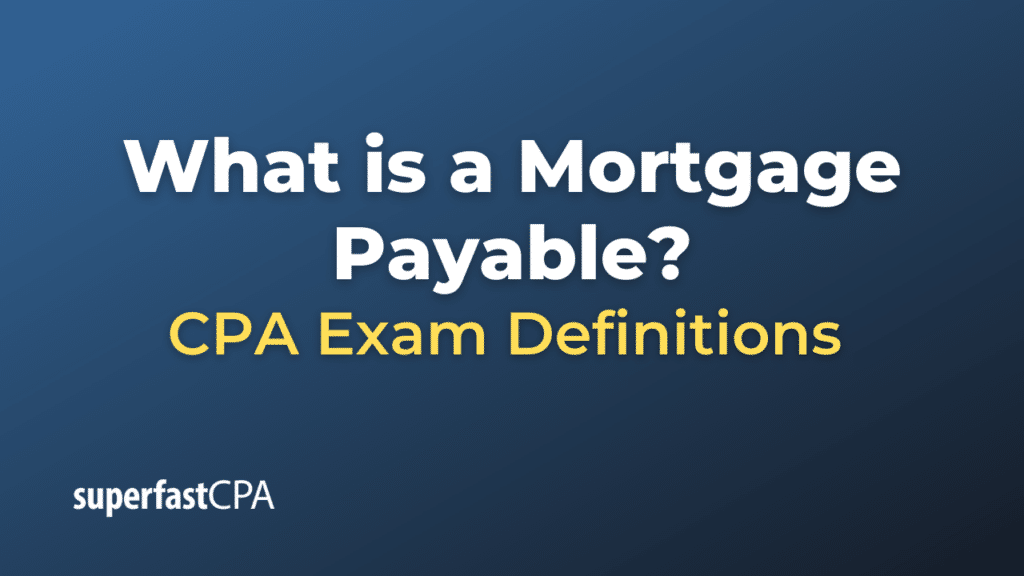Mortgage Payable
A Mortgage Payable is an account on the balance sheet that represents a long-term or noncurrent liability, specifically, the amount of a loan borrowed to purchase real estate that is yet to be paid to the lender. This liability includes both the principal and the interest, but only the principal amount is considered a mortgage payable.
A mortgage payable is usually structured to be paid back over many years (commonly 15 or 30 years), and the property serves as collateral for the lender. If the borrower defaults on the mortgage payments, the lender can seize the property and sell it to recover the amount lent.
Each payment made toward the mortgage payable reduces the amount in this account. On a balance sheet, the mortgage payable is often divided into two parts: the current portion of the mortgage payable, which is due within the next 12 months, and the long-term portion, which is due in more than 12 months.
To clarify, when payments are made, they are first applied to the interest due and the remainder goes towards reducing the principal balance. The interest portion is reported as an expense in the income statement, while the principal payment reduces the mortgage payable liability on the balance sheet.
Example of a Mortgage Payable
Let’s consider a company that wants to expand its operations and decides to buy a new building. The company doesn’t have enough cash to pay for the building outright, so it takes out a mortgage loan. The cost of the building is $500,000, and the company pays $100,000 as a down payment. This leaves a mortgage loan of $400,000.
This mortgage loan is recorded on the company’s balance sheet under long-term liabilities as a “Mortgage Payable” of $400,000. The company has agreed to a repayment term of 20 years, with annual payments.
Each year, the company will make a payment that consists of both interest and principal. For simplicity, let’s assume it pays $30,000 annually. The interest portion of this payment, say $15,000, would be recorded on the income statement as interest expense. The principal portion, the remaining $15,000, would reduce the Mortgage Payable account on the balance sheet.
After the first year, the Mortgage Payable would be reduced from $400,000 to $385,000 ($400,000 original Mortgage Payable minus $15,000 principal payment). This process would continue each year, with the Mortgage Payable being gradually paid down until it reaches zero after 20 years, at which point the mortgage is fully paid off and the company owns the building outright.
In addition, on each balance sheet during these 20 years, a portion of the Mortgage Payable that is due within the next 12 months would be classified as a current liability. This is called the “current portion of long-term debt”. This process reflects the fact that some of the mortgage liability is due sooner than the rest.
Please note, this is a simplified example. The actual calculations for a real mortgage payment would include a more complex split between interest and principal, and would depend on the loan’s interest rate and the specifics of the amortization schedule.













